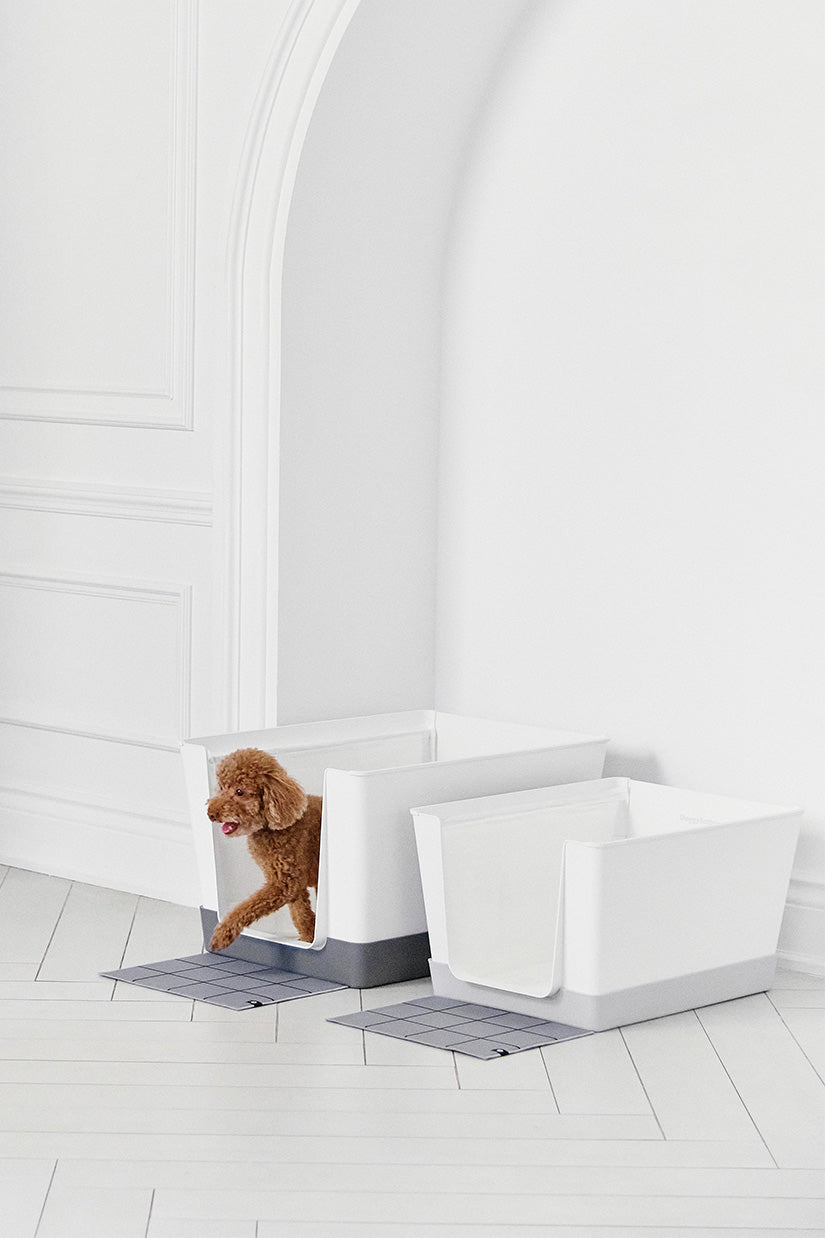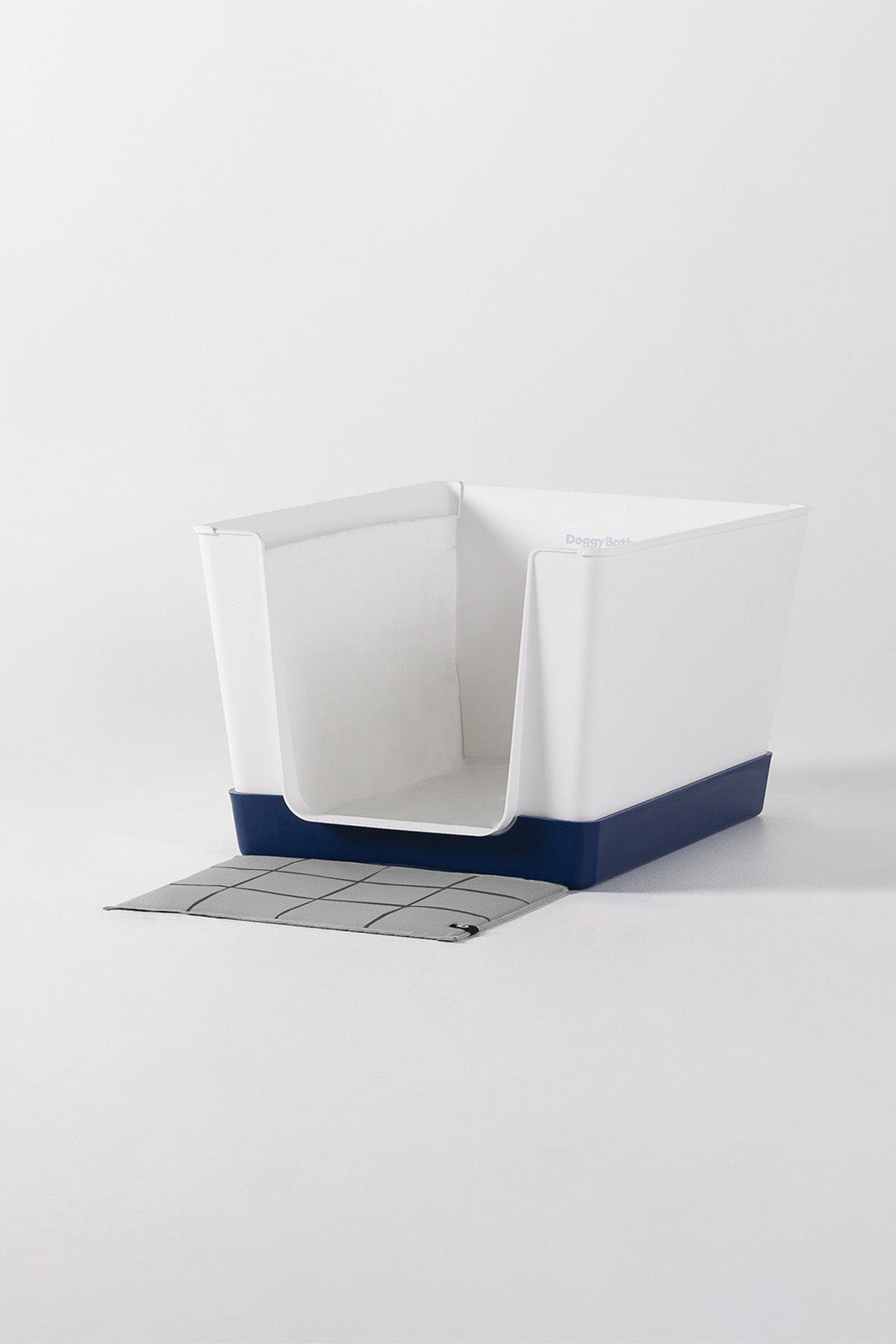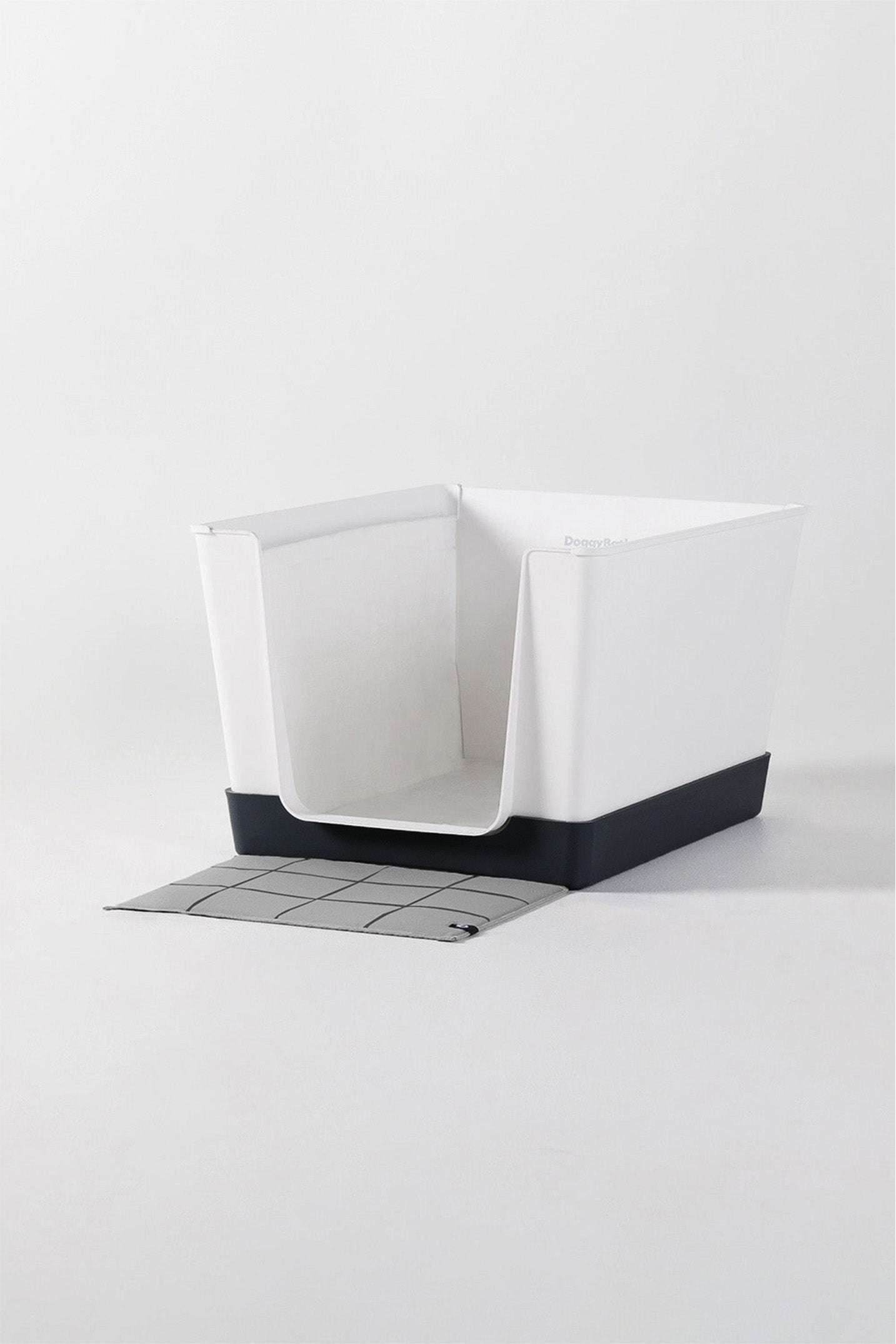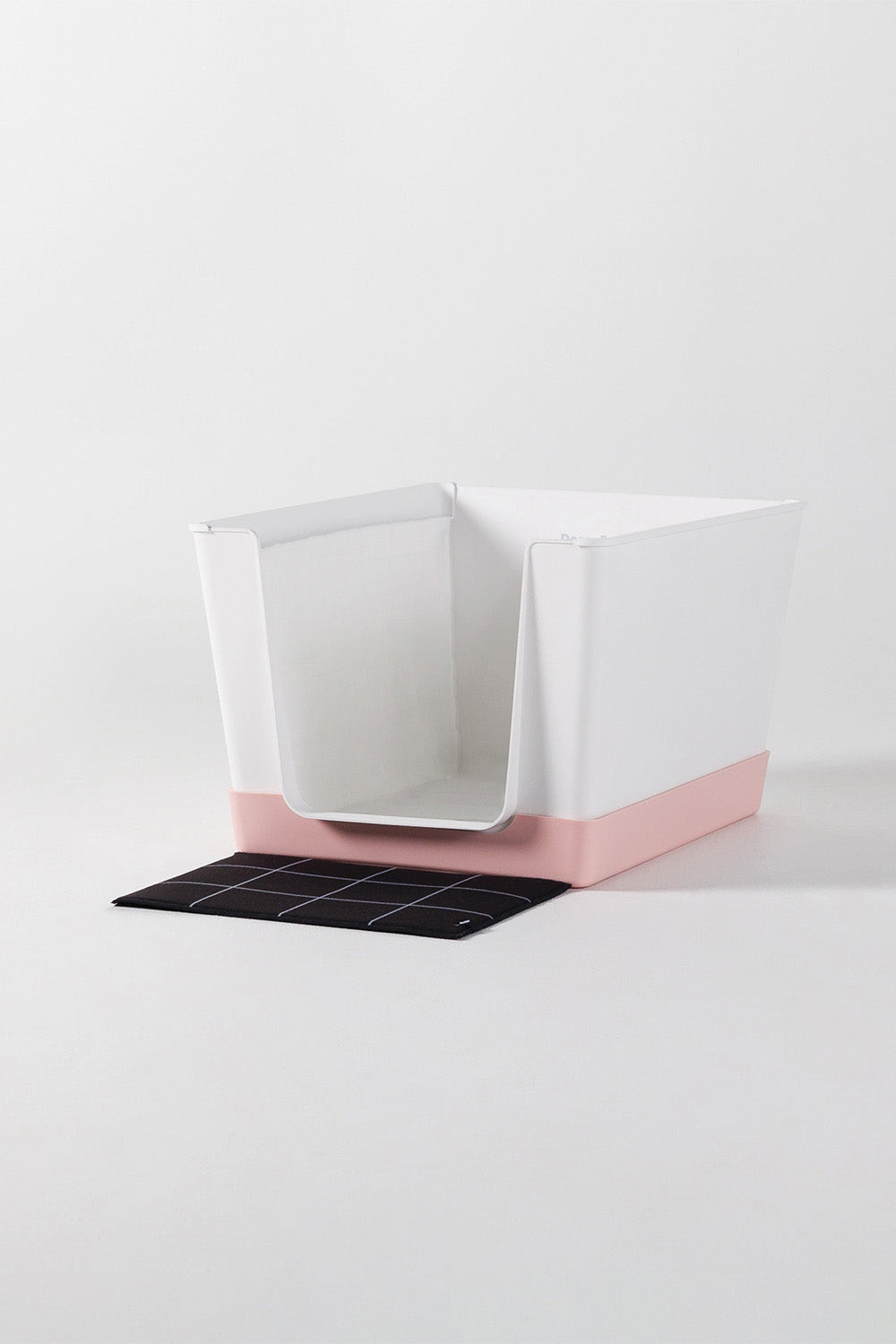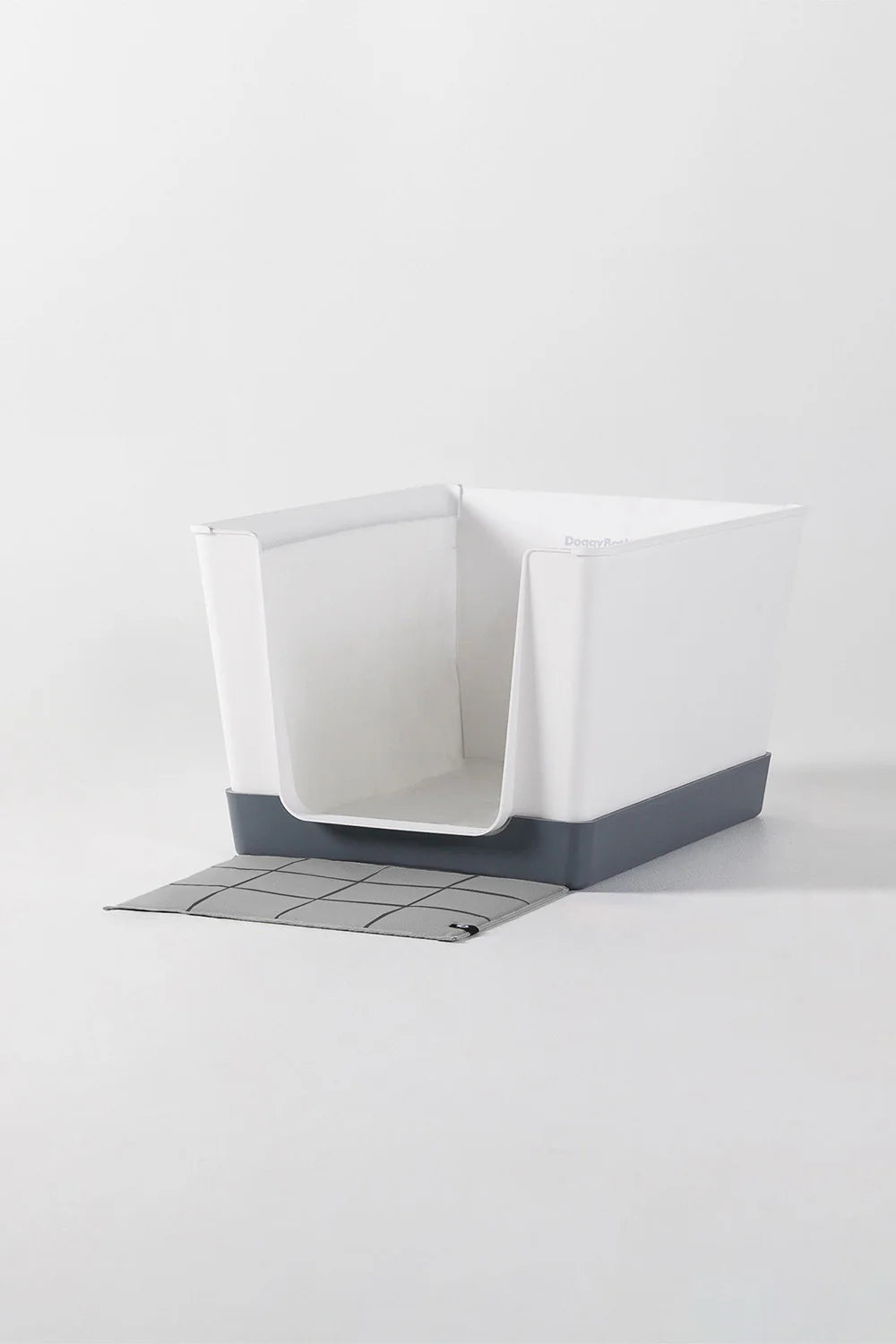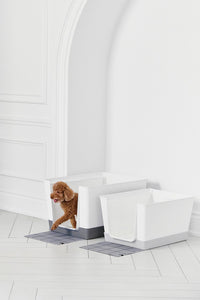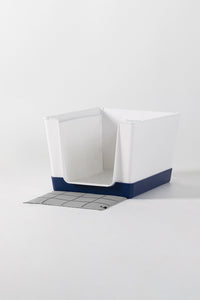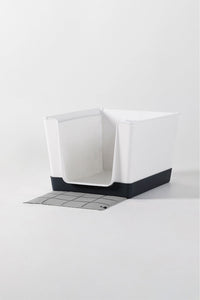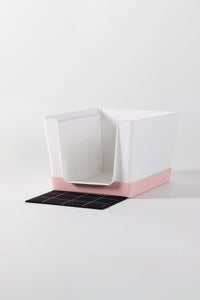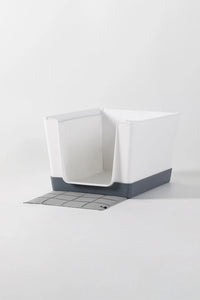Transitioning from outdoor potty training to an indoor Doggy Bathroom solution can be challenging, but with patience, consistency, and plenty of treats, your dog should adjust in no time. Start by gradually introducing the Doggy Bathroom alongside your dog’s regular outdoor potty times. This helps your dog understand that both indoor and outdoor options are acceptable. To make the transition easier, use the same command words you've used for outdoor potty training, and reward your dog for using both indoor and outdoor options.
For dogs trained on outdoor grass, consider using natural or artificial grass inserts in the Doggy Bathroom. These inserts replicate the outdoor experience and can help your dog feel more comfortable with the indoor transition. When moving to the Doggy Bathroom, place it in a familiar area that feels just as comfortable as the outdoors.
For small dog breeds, it's especially important to maintain a consistent potty routine. Be sure to reward your dog each time they use the Doggy Bathroom to keep them motivated.
If your dog hesitates to use the indoor option, try gradually reducing outdoor potty times while slowly shifting to the indoor Doggy Bathroom. Introducing a familiar scent, such as a used pee pad or piece of turf, can also help your dog feel more at ease. This approach will ensure your dog feels comfortable with the new indoor solution, making it a trusted option for your dog.












